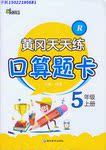题目内容
【题目】高二阶段学习比较紧张,正确的学习方法尤为重要。下表显示了两位同学不同的学习方法,请简述并发表你的观点。 字数在100—120之间。文章开头已经给出。
学习方法 | 李华 | 王海 | 你的观点 |
白天 | 上课专心听讲,尽可能经常老 师请教疑难问题。 | 上课打瞌睡,漏掉了许多要点。 | |
晚上 | 花较少时间完成作业,早点休息,上课经常保持旺盛的精力 | 花较多的时间完成作业,熬夜学习,导致注意力无法集中。 |
参考词汇: attentively 专心
energetic 精力旺盛
concentrate on 集中精力于
effectively 有效地
【答案】
Li Hua and Wang Hai are two students of Senior Two.Both of them work hard but they have different learning methods.Li Hua listens to her teachers attentively, tries to catch everything that the teachers say in class and consults her teachers/asks help for her teachers as often as possible if she has some problems.Because of this, she spends less time doing her homework, so it is certain that she can go to bed earlier and she always keeps energetic in the day.
However, Wang Hai has quite a different way of learning.He likes to sit up late at night doing his homework, so he often feels sleepy in class.As a result, he misses lots of key points and it is usually takes him more time to finish his homework, which makes it difficult for him to concentrate on what he is doing.
In my opinion, Li Hua learns more effectively in class and has more free time to enjoy herself.So I prefer her learning method.
【解析】这是一篇议论文形式写作。主要描述一下两位同学的不同学习方法,并说明自己的观点,题目已经给定大致内容,写作时要注意适当增加内容,以保证文章的连贯性,同时也需要陈述自己合理的关于学习方法的观点。全文大概份三个部分。文章第一段中everything that the teachers say in class ,用定语从句清楚明了的表述了想要表达意思。此句中的asks help for her teachers as often as possible不仅灵活地运用了词组asks help for sb ,更是准确的利用了as....as...。在第一段的倒数第一句she spends less time doing her homework, so it is certain that she can go to bed earlier and she always keeps energetic in the day.合理利用spend 这个词,十分精准,同时利用了so...that...句型,使人眼前一亮。转到第二段时,合理利用转折连词however,是全文十分连贯。第二段中like to 这个词组用的很不错,说明写作者明确了like doing 和 like to do 之间的差别,知识点明确,运用得当,之后还灵活运用了一个句型It take sb sth to do sth 句子结构十分正确,让全文内容链接紧密,最后此段中的一个句子...finish his homework, which makes it difficult for him to concentrate on what he is doing.又一个定语从句,用的非常好。最后一段运用In my opinion开头,简单地陈述了自己观点,符合写作要求,整篇文章结构十分紧凑,行文有序且严谨,是一篇不错的文章。

 孟建平小学滚动测试系列答案
孟建平小学滚动测试系列答案 黄冈天天练口算题卡系列答案
黄冈天天练口算题卡系列答案【题目】任务型阅读
请认真阅读下列短文,并根据所读内容在文章后表格中的空格里填入一个最恰当的单词。
注意:请将答案写在答题卡上相应题号的横线上。每个空格只填1个单词。
Simon Sinek is naturally shy and doesn’t like speaking to crowds. At parties, he says he hides alone in the corner or doesn’t even show up in the first place. He prefers the latter. Yet, with some 22 million video views under his belt, the optimistic ethnographer also happens to be the third most-watched TED Talks presenter of all time.
Sinek’s unlikely success as both an inspirational speaker and a bestselling author isn’t just dumb luck. It’s the result of fears faced and erased, trial and error and tireless practice, on and off stage. Here are his secrets for delivering speeches that inspire, inform and entertain.
Don’t talk right away.
Sinek says you should never talk as you walk out on stage. “A lot of people start talking right away, and it’s out of nerves,” Sinek says. “That communicates a little bit of insecurity and fear.”
Instead, quietly walk out on stage. Then take a deep breath, find your place, wait a few seconds and begin. “I know it sounds long and tedious and it feels excruciatingly awkward when you do it,” Sinek says, “but it shows the audience you’re totally confident and in charge of the situation.”
Show up to give, not to take.
Often people give presentations to sell products or ideas, to get people to follow them on social media, buy their books or even just to like them. Sinek calls these kinds of speakers “takers,” and he says audiences can see through these people right away. And, when they do, they disengage.
“We are highly social animals,” says Sinek. “Even at a distance on stage, we can tell if you’re a giver or a taker, and people are more likely to trust a giver — a speaker that gives them value, that teaches them something new, that inspires them — than a taker.”
Speak unusually slowly.
When you get nervous, it’s not just your heart beat that quickens. Your words also tend to speed up. Luckily Sinek says audiences are more patient and forgiving than we know.
“They want you to succeed up there, but the more you rush, the more you turn them off,” he says. “If you just go quiet for a moment and take a long, deep breath, they’ll wait for you. It’s kind of amazing.”
Turn nervousness into excitement.
Sinek learned this trick from watching the Olympics. A few years ago he noticed that reporters interviewing Olympic athletes before and after competing were all asking the same question. “Were you nervous?” And all of the athletes gave the same answer: “No, I was excited.” These competitors were taking the body’s signs of nervousness — clammy hands, pounding heart and tense nerves — and reinterpreting them as side effects of excitement and exhilaration.
When you’re up on stage you will likely go through the same thing. That’s when Sinek says you should say to yourself out loud, “I’m not nervous, I’m excited!”
Say thank you when you’re done.
Applause is a gift, and when you receive a gift, it’s only right to express how grateful you are for it. This is why Sinek always closes out his presentations with these two simple yet powerful words: thank you.
“They gave you their time, and they’re giving you their applause.” Says Sinek. “That’s a gift, and you have to be grateful.”
Passage outline | Supporting details |
【1】to Simon Sinek | ●He is by【2】shy and dislikes making speeches in public. |
Tips on delivering speeches | ●Avoid talking【4】for it indicates you’re nervous. |
●Try to be a giver rather than a taker because in【6】with a taker, a giver can get more popular and accepted. | |
●Speak a bit slowly just to help you stay calm. | |
●Switch nervousness to excitement by【9】the example of Olympic athletes. | |
●Express your【10】to the audience for their time and applause to conclude your speech. |